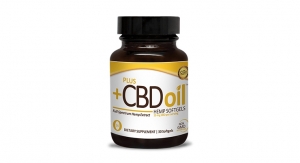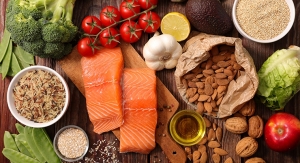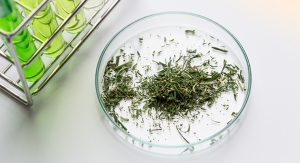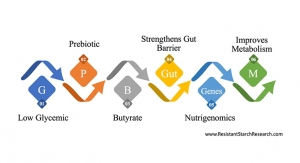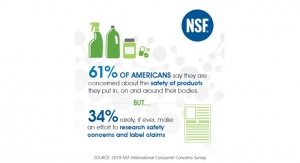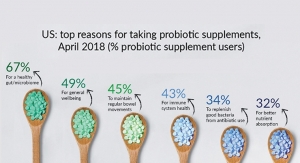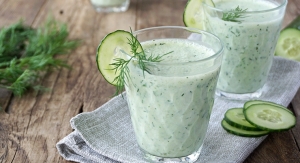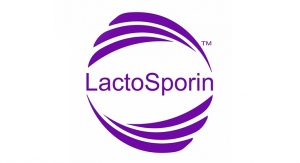08.14.19
The founder of Australia-based Cell-Logic and a leader in nutrigenomics, nutritional biochemist Christine Houghton, PhD, BSc, RNutr, has endorsed Lactobacillus HK L-137, the primary constituent of House Wellness Foods Immuno-LP20.
Nutrigenomics is the study of how food-derived nutrients can change the expression of genes, allowing people to select foods based on their ability to enhance internal defenses, including immune function.
Both Cell-Logic and House Wellness Foods are committed to developing supplemental ingredients and functional foods that can prevent disease, allergies, and inflammation rather than relying prescription drugs.
According to Houghton, overuse of antibiotics has led to resistant pathogens and the elimination of beneficial microbiota. More importantly, antibiotics have also led to the erosion of the mucus lining of the intestines, and the destruction of what she called the “gut-immune interface.”
“Underappreciated is the fact that 80% of human immune activity occurs just below the single layer of cells lining the gut,” she said.
Cell-Logic is known for its flagship ingredient, a potent vehicle for the delivery of sulforaphane, an inducer of glutathione S-transferases (GST) and other cytoprotective enzymes, and derived from broccoli sprouts via the company’s proprietary process. As the company sought a specific immune-enhancing ingredient that would trigger activity of the gut-immune interface, Houghton came across House Wellness Food’s research on Lactobacillus plantarum, a probiotic bacterium found in an abundance of foods prepared by ancient Southeast Asian methods of fermentation.
She was impressed with the range of rigorous clinical trials proving the strain’s effectiveness. However, she felt the exact strain the company was working with had “completely turned upside-down some of our ingrained thinking.”
She was referring to House Wellness Food’s focus on heat-killed, L. plantarum, HK L-137. The company’s process involved growing, optimizing, and then killing bacteria through heat induction. “The very thing that we thought would make them useless,” Houghton said.
Heat killing preserves the bacterium’s cell wall, which contains the main source of the molecule lipoteichoic acid (LTA). LTA is recognized by receptors in the intestinal lining, signaling it to activate its immune defenses. Houghton acknowledged the range of clinical research House Wellness Foods carried out on HK L-137 that resulted in in published, peer-reviewed studies proving its effectiveness not just in bolstering immune functions and countering the detrimental effects of external toxins, but also in preventing upper respiratory infection and physically improving the periodontal environment.
Houghton noted that HK L-137 is versatile, has a long shelf life, and is heat-stable and acid-stable. “Three clear advantages over a live probiotic supplement,” she said.
She also highlighted the “enormous potential” for HK L-137 in human health. “Just as with Cell-Logic’s own signature sulforaphane, HKL-137 is an excellent example of an ingredient that mimics nature’s approach, especially in the prevention and management of infectious disease, allergy and unresolved inflammation. As such, it meshes perfectly with the Cell-Logic philosophy.”
Nutrigenomics is the study of how food-derived nutrients can change the expression of genes, allowing people to select foods based on their ability to enhance internal defenses, including immune function.
Both Cell-Logic and House Wellness Foods are committed to developing supplemental ingredients and functional foods that can prevent disease, allergies, and inflammation rather than relying prescription drugs.
According to Houghton, overuse of antibiotics has led to resistant pathogens and the elimination of beneficial microbiota. More importantly, antibiotics have also led to the erosion of the mucus lining of the intestines, and the destruction of what she called the “gut-immune interface.”
“Underappreciated is the fact that 80% of human immune activity occurs just below the single layer of cells lining the gut,” she said.
Cell-Logic is known for its flagship ingredient, a potent vehicle for the delivery of sulforaphane, an inducer of glutathione S-transferases (GST) and other cytoprotective enzymes, and derived from broccoli sprouts via the company’s proprietary process. As the company sought a specific immune-enhancing ingredient that would trigger activity of the gut-immune interface, Houghton came across House Wellness Food’s research on Lactobacillus plantarum, a probiotic bacterium found in an abundance of foods prepared by ancient Southeast Asian methods of fermentation.
She was impressed with the range of rigorous clinical trials proving the strain’s effectiveness. However, she felt the exact strain the company was working with had “completely turned upside-down some of our ingrained thinking.”
She was referring to House Wellness Food’s focus on heat-killed, L. plantarum, HK L-137. The company’s process involved growing, optimizing, and then killing bacteria through heat induction. “The very thing that we thought would make them useless,” Houghton said.
Heat killing preserves the bacterium’s cell wall, which contains the main source of the molecule lipoteichoic acid (LTA). LTA is recognized by receptors in the intestinal lining, signaling it to activate its immune defenses. Houghton acknowledged the range of clinical research House Wellness Foods carried out on HK L-137 that resulted in in published, peer-reviewed studies proving its effectiveness not just in bolstering immune functions and countering the detrimental effects of external toxins, but also in preventing upper respiratory infection and physically improving the periodontal environment.
Houghton noted that HK L-137 is versatile, has a long shelf life, and is heat-stable and acid-stable. “Three clear advantages over a live probiotic supplement,” she said.
She also highlighted the “enormous potential” for HK L-137 in human health. “Just as with Cell-Logic’s own signature sulforaphane, HKL-137 is an excellent example of an ingredient that mimics nature’s approach, especially in the prevention and management of infectious disease, allergy and unresolved inflammation. As such, it meshes perfectly with the Cell-Logic philosophy.”



